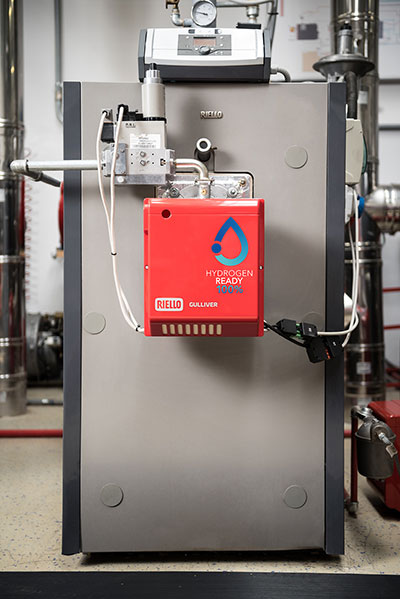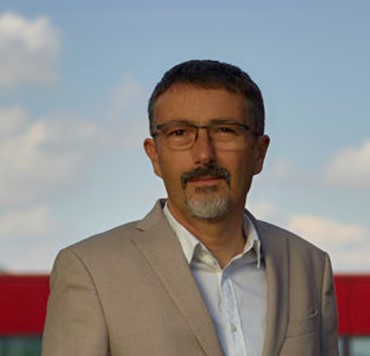NEWS
Hydrogen & Biofuels: for a zero-emissions future
Working towards an energy transition
The increasing global focus on climate change, combined with the establishment of a roadmap designed to make Europe the first continent to achieve net zero, as set out in the objectives of the Green Deal, along with the role played by renewable energy and the new opportunities offered by hydrogen are the factors that are propelling the world energy scene towards an energy-efficient, modern circular economy model.
President of the European Commission Ursula von der Leyen has called for a 55% reduction of CO2 emissions by 2030, with the ultimate goal to achieve net zero by 2050 with the FitFor55 package of legislations, which has now been agreed upon; this represents a major challenge for the energy sector, which will now be required to reduce its emissions by 75% by 2030.
According to the data set out in the World Energy Outlook 2020 published by the IEA - International Energy Agency, fossil fuels still account for more than 70% of primary energy demand in Europe. Despite the fact that the most recent forecasts provided by the Agency predict a reduction in gas consumption of between 0.6% and 2.8% per year over the course of the next 20 years, natural gas is still set to account for between 19% and 26% of demand in Europe, due to the fact that it is essential for production processes and also for domestic heating.


"In the current market scenario, the process of decarbonisation is dependent on a number of variables, which are closely linked to political, economic and tax-related choices at both national and European level, as well as to the new technological frontiers that lie ahead”, comments Stefano Visonà, Product Marketing Manager - HVAC Commercial & Burners for Riello, adding: “Today more than ever, it is therefore necessary to pursue an integrated approach to the implementation and management of the energy system, connecting all the key players in the supply chain in a synergistic and flexible way: from producers of technologies and infrastructures to industrial users."
For further informations visit Entsog Website
https://h2-project-visualisation-platform.entsog.eu/
The role of green hydrogen in energy-intensive industries
How electrolysis works:
- 1. The water used in the electrolysis process must contain salts and minerals in order to conduct electricity
- 2. Two electrodes are immersed in water and connected to the energy source, which applies a direct current
- 3. The splitting of the water into hydrogen and oxygen occurs when the electrodes extract ions with an opposing electrical charge
- 4. During the process of electrolysis, an oxidation-reduction or redox reaction occurs due to the effect of electricity
Green hydrogen, obtained through the electrolysis of water using electricity from renewable sources (such as wind or photovoltaic systems), will play a crucial role in decarbonising energy-intensive industries, such as air and maritime transport, steel and chemicals.
“This technology is currently not very competitive on the market, due to the high costs of production. In fact, around 95% of the hydrogen used primarily for industrial purposes - blue or grey hydrogen - is produced using processes that are based on fossil fuels, and which result in significant amounts of CO2 being released into the atmosphere", states Visonà, before adding:
“Currently, there are still a lot of challenges to be overcome, in order to create a true green hydrogen market. The focus of the energy transition towards this more sustainable source is first and foremost on production systems and the role that gas transportation and distribution networks will play in the rapid development of this technology.”
TYPES OF HYDROGEN
Grey Hydrogen
Produced through a process called steam reforming with natural gas (where CO2 emissions are produced); currently, this represents 90% of the hydrogen generated for industrial processes
Blue Hydrogen
Hydrogen produced from natural gas, with subsequent storage or disposal of the CO2 underground/under the seabed (CCS technology)
Green Hydrogen
A (relatively expensive) type of hydrogen obtained through electrolysis/ power-to-gas processes which are based on renewable energy sources
In the future, the expected decrease in the costs of electrolysers, technological advancements in renewable energy plants and subsequent reductions in the cost of the kWh produced will render it possible to create large-scale green hydrogen production plants. As such, the production of green hydrogen could potentially represent a means of transforming, storing and reusing energy produced from renewable sources that are 'irregular' by their very nature (such as wind and photovoltaic energy).
European funds and financial instruments designed to support investments in hydrogen
The growing focus on hydrogen coincides with the biggest ever public investment and funding programme ever implemented in Europe, designed to foster recovery in the wake of the Covid-19 pandemic. In this regard, the Multiannual Financial Framework 2021-27 (MFF) and the Next Generation EU initiative will provide a total of more than 1,824 billion euros to help overcome the crisis and make the European economy stronger and more resilient; it represents an unprecedented opportunity to get investment in this new and promising technology off the ground.
What Riello offers
Back in 2019, Riello launched an ambitious project to develop a range of burners and forced draught boilers (condensing boilers combined with burners) specifically developed in order to operate safely and highly efficiently with green hydrogen.
The company carried out tests at the Combustion Research Centre in Angiari on a range of forced draught boiler condensing thermal units that are 100% fuelled by hydrogen, obtaining excellent results both with regard to the disappearance of carbon oxides in the flue gases (CO-CO2) and in terms of the very high energy efficiency achieved.
It also supplied six dual-stage low NOx burners powered 100% by hydrogen for the 'Hy4Heat' programme, a research project sponsored by the British government on the use of hydrogen in residential and commercial buildings and in gas appliances, with a view to establishing how this resource could be used in different communities.
Thanks to the significant results achieved, the new Riello 100% hydrogen-powered boilers are now under development, with a view to reaching up to 3 MW, and to being used in experimental applications with commercial and industrial partners.
“Riello is ready to embrace the challenge posed by energy transition, accompanying customers through this delicate phase through the research and development of solutions that can satisfy a wide range of application requirements.” Visonà adds a further comment: “This is an urgent commitment that the hard-to-abate industrial and process sectors must make, and for which there does not exist just one, single path to be followed. We believe that it is essential to offer a portfolio of different technologies that can meet the specific needs of industrial processes, which differ so widely from one another. As such”, he concludes “energy efficiency, the circular economy, green fuels (hydrogen and biofuels) and electrification all represent complementary elements of a joint, integrated action plan that will help to reduce emissions in both the short and medium term.”
20/10/2021
